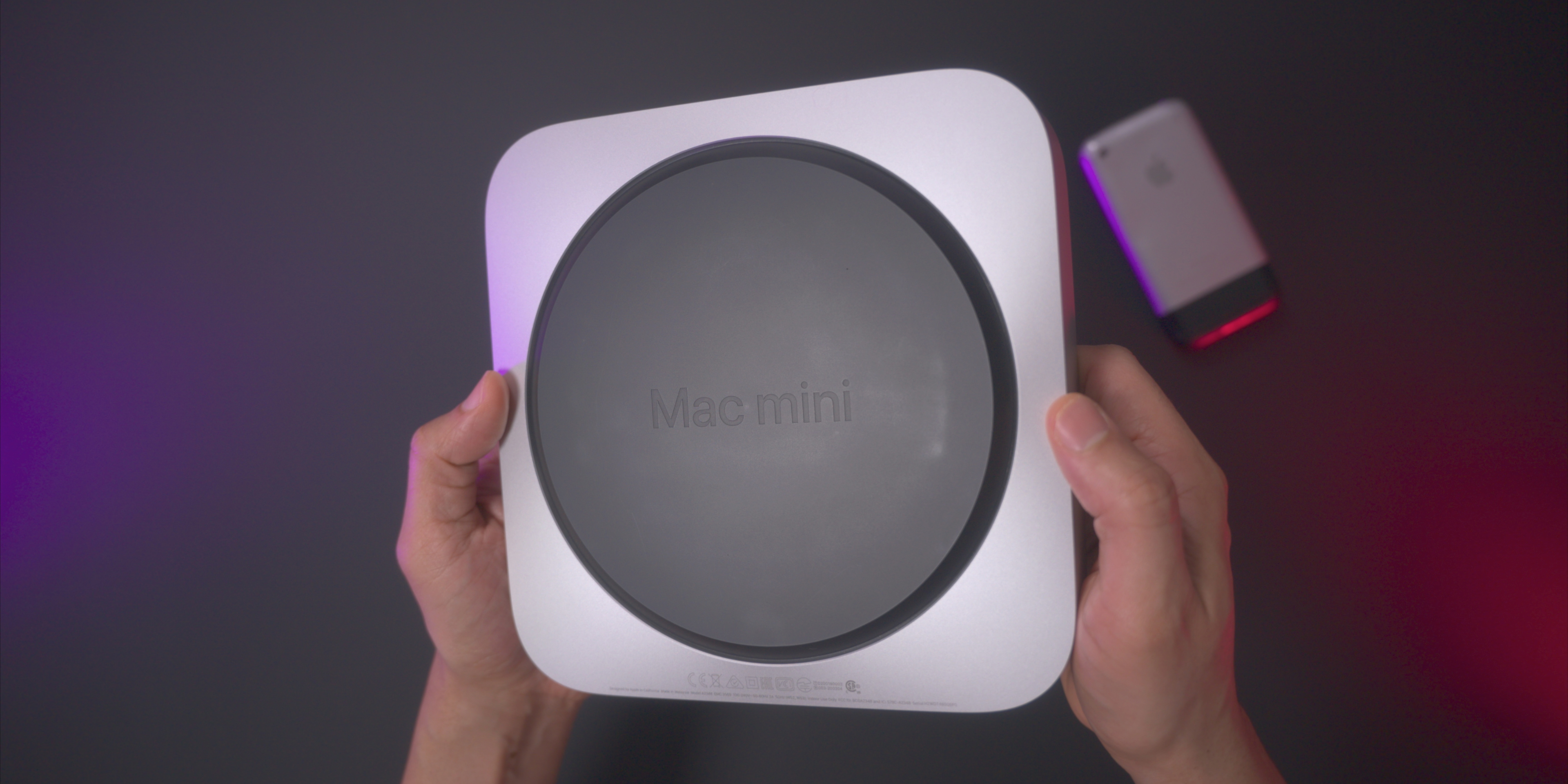

- #Mac mini review daisy chained pro#
- #Mac mini review daisy chained mac#
- #Mac mini review daisy chained windows#

#Mac mini review daisy chained windows#
There's also a TBT-DP2X version that only works on Windows systems because it's an older variant that uses an older Thunderbolt chipset that Apple never supported. If you go that route, just be careful that you buy that TBT-DP2X-83 version. An Apple support document posted today reveals that a Mini DisplayPort display cannot be daisy chained to a Thunderbolt display.
#Mac mini review daisy chained mac#
When used on a Mac, once again that adapter would cause the Mac to allocate one GPU output to each display rather than relying on DisplayPort MST. The only other way to run multiple displays from a single port on a Mac would be with something like a Thunderbolt 3 to Dual DisplayPort adapter, like this one. There are multiple complaints about this spanning several years both here, on Apples forums, and elsewhere on the Internet. And third, macOS still does not support DisplayPort MST, which is required for daisy chaining. I suppose in theory you could have that type of implementation in a display, where the display essentially had a built-in Thunderbolt dock and the display's own panel was wired to that over DisplayPort, and then the display's daisy chain output port was also connected to that built-in dock as well - but I wouldn't assume that design would be there. Second, daisy chains can only be used when everything in the chain is using native DisplayPort, i.e. But that may be different because in that case, the dock is taking responsibility for accepting and handling the video signal for both displays anyway. I do know there are some Thunderbolt docking stations such as the Dell WD19TB that have a "downstream" TB3 peripheral port that CAN send regular DisplayPort Alt Mode to a regular USB-C display connected to that port. It's true that TB3 ports on laptops can run regular DisplayPort Alt Mode, but in that case they're just working as regular USB-C ports - but I've never heard of a display being able to do that on its "downstream" TB3 peripheral output port. I don't think you can rely on the ASUS display to "impersonate" your Dell display on its own native Thunderbolt link with your Mac in order to get your Mac to allocate one GPU output to each display and send both over native Thunderbolt, and then have the ASUS display extract the signal meant for the Dell display from that native Thunderbolt signal and pass it along as a basic USB-C DisplayPort Alt Mode signal, which is what your U2719DC would require in order to accept video on its USB-C input. From a cabling standpoint it would look like a DisplayPort MST daisy chain, but in reality it's a Thunderbolt daisy chain, and that distinction matters in this case. If that's what you actually had, your Mac would then be able to see both devices on the Thunderbolt chain and allocate one GPU DisplayPort interface to each. If the ASUS display has a Thunderbolt output, it's possible that it only allows a native Thunderbolt device on the other end. DisplayPort MST relies on the source system being able to split up a single DisplayPort interface among multiple displays. It relies on the fact that a TB3 link can carry two independent DisplayPort interfaces from the GPU, in which case macOS can allocate one interface to each display. And the multi-display capability over TB3 for Macs does not rely on DisplayPort MST, which is what runs daisy chaining. For best performance while using Thunderbolt storage devices, connect the Thunderbolt display to the computer's Thunderbolt port first.Macs do support running multiple displays from a single output over TB3, but you're not actually running TB3 along the entire chain because the U2719DC is not a native Thunderbolt display it's just a USB-C display. Mini DisplayPort displays will not light up if connected to the Thunderbolt port on an Apple Thunderbolt Display (27-inch). Mac mini with AMD graphics can support a HDMI compatible device on its HDMI port when using two Thunderbolt displays. iMac (27-inch, Mid 2011) with two Thunderbolt ports supports a total of two Thunderbolt displays regardless of which Thunderbolt port each display is connected to.ģ.
#Mac mini review daisy chained pro#
Connecting a second Apple Thunderbolt Display (27-inch) to a 13-inch MacBook Pro will make the screen on the MacBook Pro turn black.

An Apple support document posted today reveals that a Mini DisplayPort display cannot be daisy chained to a Thunderbolt display.Īccording to the document the MacBook Air (Mid 2011) only supports one Thunderbolt Display whereas, the MacBook Pro (Early 2011), iMac (Mid 2011 and Late 2011), and Mac mini (Mid 2011) support two Thunderbolt displays.ġ.


 0 kommentar(er)
0 kommentar(er)
